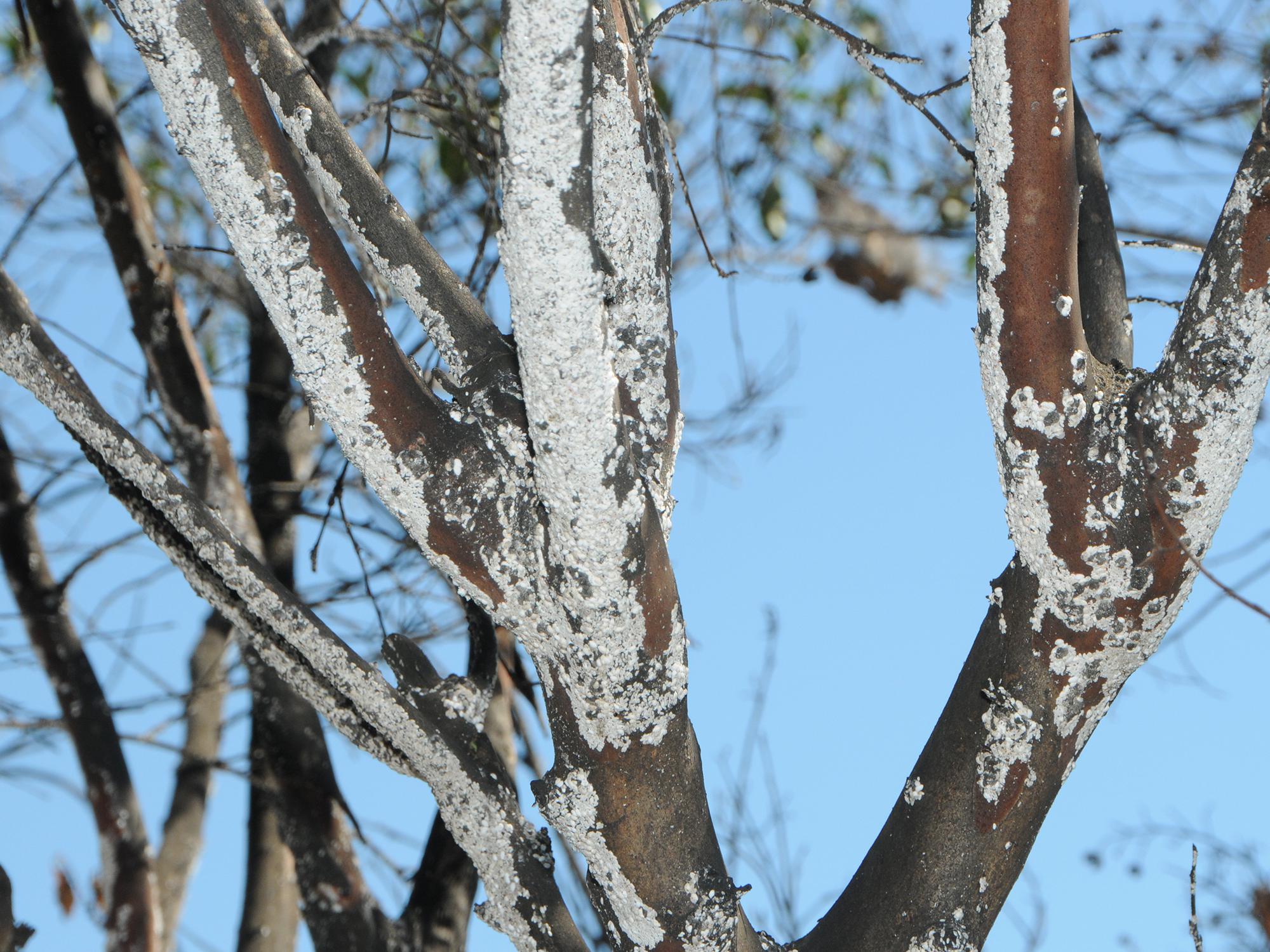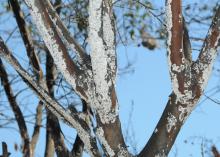Information Possibly Outdated
The information presented on this page was originally released on July 31, 2018. It may not be outdated, but please search our site for more current information. If you plan to quote or reference this information in a publication, please check with the Extension specialist or author before proceeding.
Act decisively to stop crape myrtle bark scale problems
STARKVILLE, Miss. – A tiny pest is making a huge impact on crape myrtles across the state, threatening to turn this go-to plant into something that gardeners avoid.
Crape myrtle bark scale, or CMBS, was first detected in the state in early 2015. It was found in Ocean Springs in Jackson County, and then soon after in Olive Branch and Southaven in DeSoto County. It has since been spotted in several places around the state, concentrated in six hot spots: Natchez, Oxford, Senatobia, coastal counties, the Jackson area and the Southaven/Memphis area.
Blake Layton, an entomologist with the Mississippi State University Extension Service, said this serious, nonnative pest could easily spread to other areas.
“If you’re buying or planting crape myrtles, you need to make sure they’re not infested with the crape myrtle bark scale,” Layton said. “If your plants do get this pest, you can control them.”
CMBS are insects that are big enough to be seen. The presence of these pests is marked by heavy accumulations of black, sooty mold and patches of white, felt-like material on the trunk, limbs or twigs. CMBS infestations produce sticky honeydew, which supports the growth of fungi that cause the black mold.
“Individual adult female scale are oval-shaped and about one-tenth of an inch long,” Layton said. “Heavily infested limbs may have so many scale that they are totally encrusted with the insects. A definitive characteristic of the scale is that the insects bleed pink when their felt cover is broken with a knifepoint or toothpick.”
The pest is native to China. It was first found in Texas in 2004 and has since spread east to Louisiana, Arkansas, Tennessee, Mississippi and Alabama.
Layton urges homeowners, landscapers, groundskeepers and anyone else to look for evidence of this pest on crape myrtles in their areas.
“This pest spreads farther every year. It has only been in Natchez for a short time, and it was discovered this spring in Senatobia,” he said. “It spreads in two ways. It covers long distances by being transported in on infested plants. Once in an area, it apparently can spread shorter distances by the nymphs travelling when they hatch or by hitching a ride on a cicada, squirrel or bird.”
The risk for spreading CMBS also comes as the pest is being managed.
“If trimmings from infested crape myrtles are hauled away in an uncovered truck, the insects can spread that way,” Layton said. “When disposing of infested branches, always cover them with a tarp when taking them away to the landfill.”
Ty Jones, an Extension agent in Madison County, has worked with Layton to address the problem in one particular hot spot: a subdivision that had landscaped its public areas with crape myrtles infested with the pest.
“Blake came in and talked to the homeowners’ group when they first started seeing the pest and taught them how to control its spread,” Jones said. “When crape myrtle bark scale is found in a common area, it helps when a group can come together and work to mitigate the problem.”
Joy Anderson, Extension director in DeSoto County, said the problem is compounded in her urban area by large spaces planted only in crape myrtles.
“When one plant gets it, they all start to get it,” Anderson said. “Although the insecticide treatment is very effective, it is expensive, and many times people choose to remove infected plants rather than treat them.”
Layton said some insecticides are very effective against CMBS. They can easily be applied once a year as a drench poured into the soil around the base of the infected tree. Systemic insecticides include dinotefuran and imidacloprid. It takes a month or longer for results to appear, as the chemical must spread through the plant to affect the pests.
Learn more about the identification and treatment of this pest in Extension Publication 2938, “Crape Myrtle Bark Scale Identification and Control.” Search for P2938 at http://extension.msstate.edu/publications.



